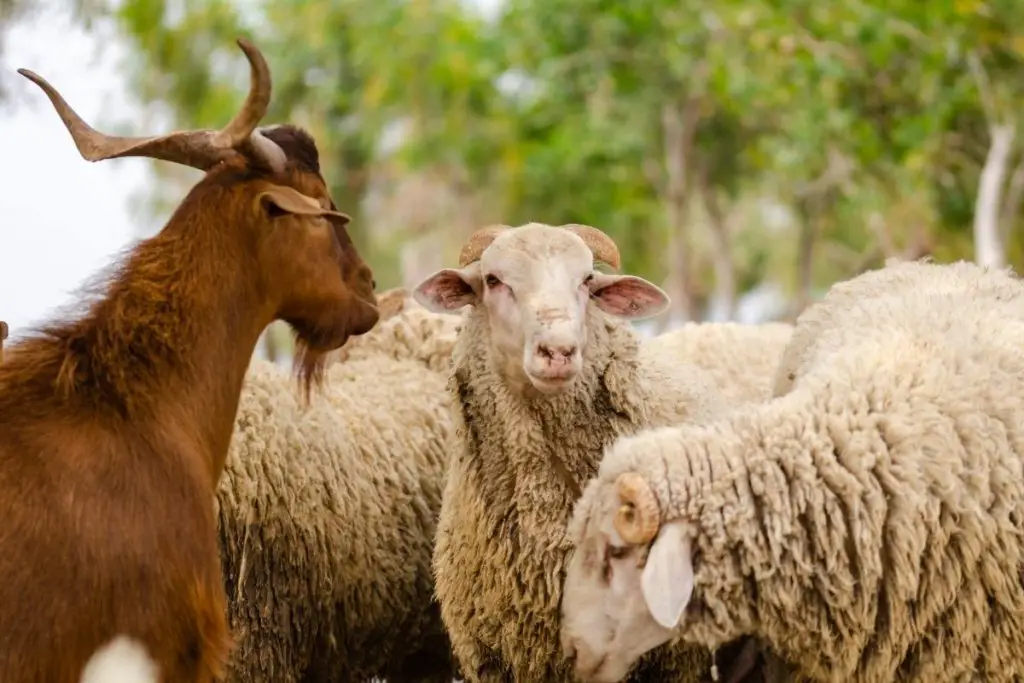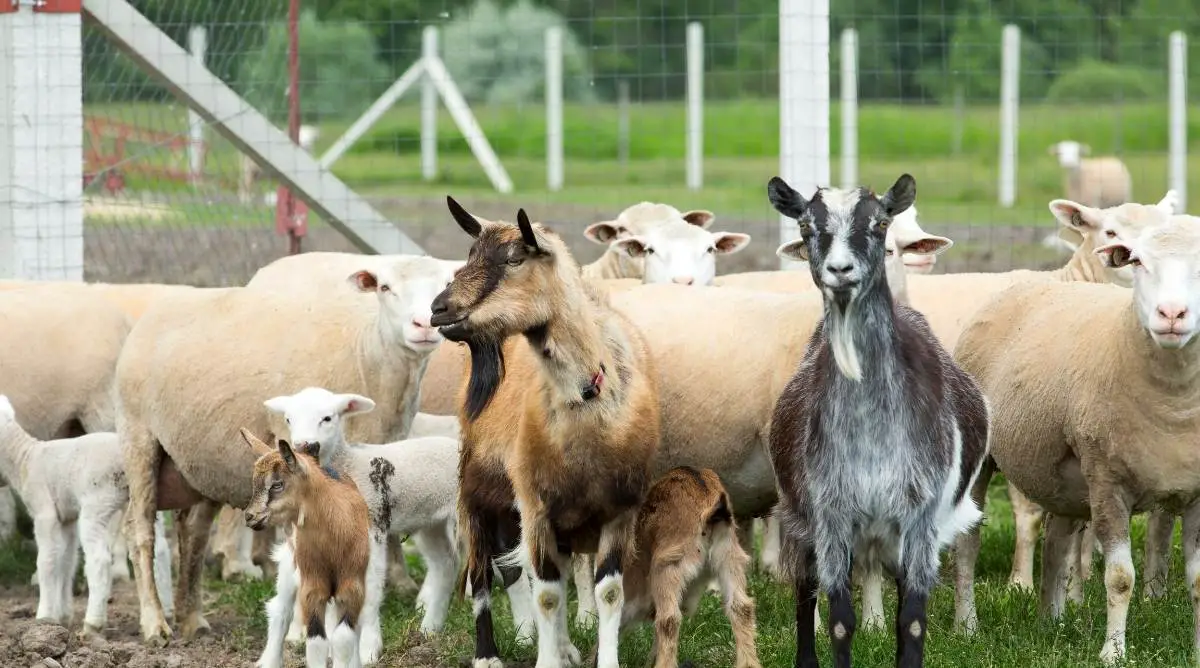Goats and sheep can live together, but it requires planning, patience, and extra attention to detail to account for the social structure and environmental needs of each species. Risks include the intermission of diseases between animals, the possibilities of interbreeding, and the difference in social behavior between sheep and goats.
Table of Contents
How to raise goats and sheep together
If you’re managing a small farm, you can usually raise goats and raise sheep together with minimal issues. Doing so can reduce your overhead and potentially make management easier than having separate areas for both species.
Here are some tips:
- Find a place where you can keep both animals: You can use one pasture, but consider placing fences in the grazing area so they don’t come into contact except when they need food or water.
- Give some time for acclimation: Before you start housing the animals together, take time to get them accustomed to each other. This can help make the transition process easier for both animals. Allow at least one to two weeks for the transition period, especially if you’re handling a relatively large group. Separate the animals in their stalls for a few hours daily (or overnight). This will allow them to become familiar with each other’s smells without having excessive contact with each other to start with.
- Be careful with pregnant animals: Pregnant and nursing animals should be separated from the rest of the group to reduce risk of injury.
- If issues arise, you may only need minimal separation: You can use an electric fence or a wire pen with a gate to keep your goats and sheep separate if trouble arises between the animals.
Food
Sheep and goats have similar nutritional requirements. This is one reason it’s common for farmers of goat and sheep to consider housing them together.
Both species can consume:
- Hay
- Shrubs
- Corn
- Grass
- Sorghum
- Barley
- Legumes
- Oats
- Combination of these
Diseases & Parasites
Sheep and goats and susceptible to the same diseases and parasites and can pass them to each other. You can use similar disease prevention measures for both, such as vaccinations, drenches, and deworming.
Here are some diseases and parasites that both sheep and goats can get:
- Listeriosis
- Rabies
- Q Fever
- Dermatophytosis (ringworm)
- Soremouth (contagious ecthyma)
- Campylobacteriosis
- Salmonella
Housing & Fencing

If you’re adding goats to your existing sheep structures, keep in mind that goats are escape artists that can jump and more easily escape from their pens compared to sheep.
Ensure that your housing is sturdy and your wire fence is high enough to protect against that. Regularly check their space for signs of weak structures, holes, and gaps. Goats tend to look for these things and may use it as an opportunity to escape.
Social structure
Goats and sheep are different species and are both herd animals, which means you need more than one of each in order for them to thrive.
Keep the following in mind:
- Sheep social structure requires the ewes to stay together with the yearlings and lambs while the rams are kept away from them, except during breeding season.
- Goats generally do not need to be isolated from one another.
- You may spot dominant animals in each group. Keep these away from each other as much as possible to avoid unnecessary fights that can lead to injury.
Interbreeding
Sheep and goats don’t often mate, but this is possible in some cases, especially if they interact closely regularly.
Weigh this possibility and always look for signs of female goats and sheep being in heat. This is a risk of keeping them together. The offspring of goats and sheep rarely survive.

